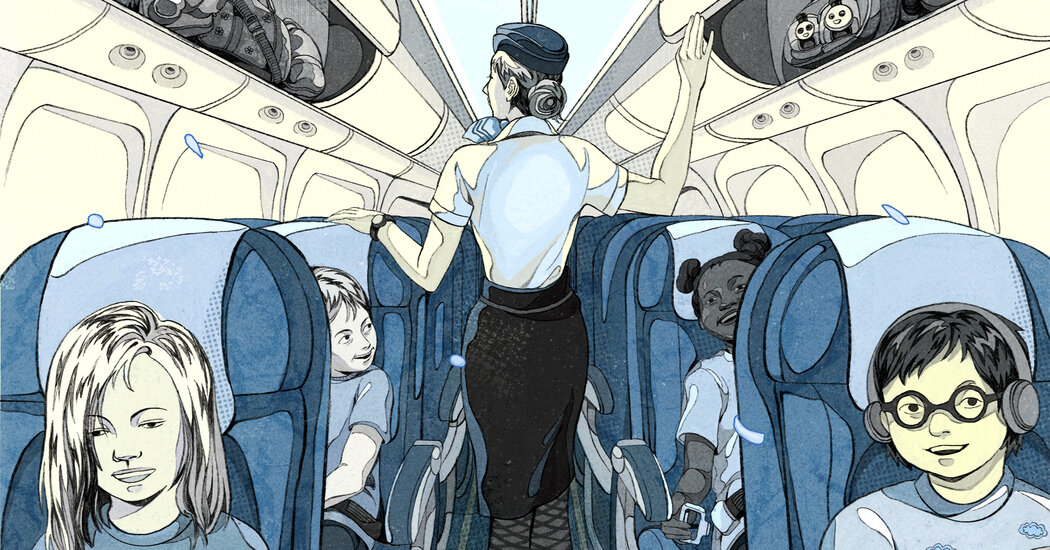
For many parents and guardians, putting a child on a flight alone may seem terrifying. Belligerent passengers, delays, turbulence: All loom large in a caregiver’s imagination.
Life sometimes leaves no other option. Hudson Crites, 17, of Marshall, Va., was 10 when he started flying unaccompanied to visit his father in Kansas and later Georgia, said his mother, Chelsea Tippett. But the extra attention from airline staff made Hudson “feel special,” Ms. Tippett recalls. Other than a single tarmac delay, he has had no problems.
On rare occasions, children have had troubling experiences. In December, Spirit Airlines accidentally flew a 6-year-old to Orlando, Fla., instead of the intended destination of Fort Myers. Spirit apologized, fired the gate agent responsible and offered reimbursement to the boy’s grandmother for her travel to Orlando. But while the boy was unharmed, his grandmother expressed worry that he had been kidnapped.
If you decide to fly your child unaccompanied, you’ll discover that each airline has its own procedures, fees and routes open to children. While some may find the process complicated, flying alone may be exciting for your child, instilling some independence. Here’s what you need to know.
Before you book, know the process
Regardless of the airline or route, flying an unaccompanied minor differs from an adult or a family catching a flight. Airlines require a trusted pre-authorized adult to be at the departure and arrival gates, and will ask you at booking to provide contact information for those adults. They will also need to present identification at the terminals.
The journey begins at the originating airport’s airline ticket counter. There, airline staff will check your identification and check in the child, perhaps handing them a lanyard or wristband to wear. The agents will provide you with a pass to get through security with your child. You will accompany them to the gate, where you will hand them off to a gate agent. You must stay at the gate until the plane takes off.





